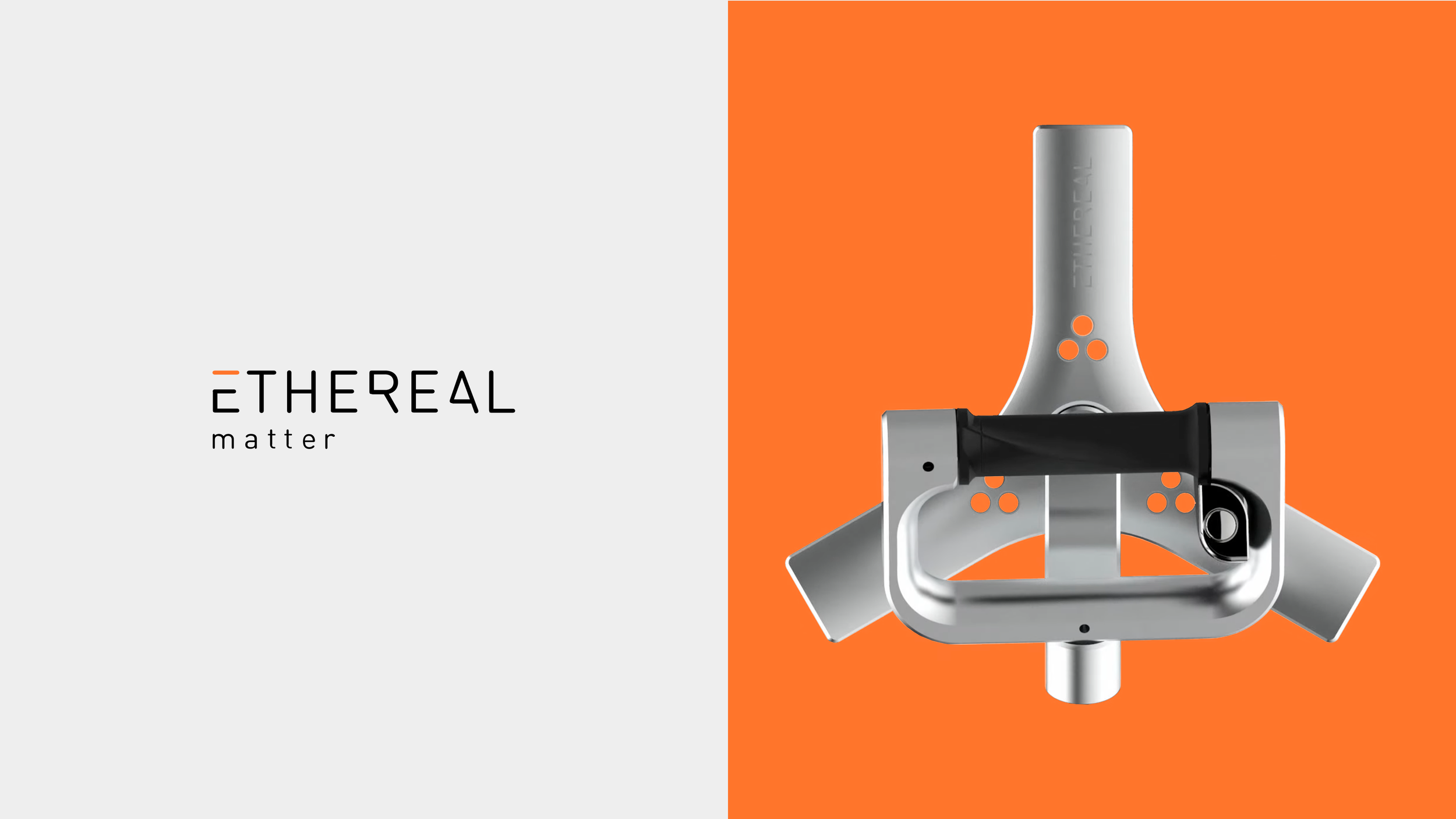Ethereal Matter - Part 2
Ethereal Matter is an early-stage wellness and fitness startup in Sausalito, California, led by founder and designer Scott Summit. The startup’s mission is to reshape how we approach fitness by merging virtual reality with dynamic physical workouts. Their first product—EVA—introduces an entirely new way to engage with immersive exercise.
Refined logomark & collateral aesthetic
Challenge & context
With an existing wordmark in place, Ethereal Matter had the initial foundation of a brand identity. However, with VR-based fitness being an emerging category lacking an established design language—and spanning two distinct markets—there was a clear need for a cohesive pitch deck and a broader visual framework. The resulting branding work did more than convey innovative technology; it also opened new pathways for defining the company’s DNA, incorporating elements of industrial design, UX, and the founder’s personal influences into a unified vision.
Process & Approach
Data Visualization: Delivered concise charts and visuals that simplified complex communications, effectively highlighting Ethereal Matter’s market potential.
Brand Refinement: Leveraged an existing word mark as the foundation for a comprehensive brand update. Adjusted the kerning and augmented the letter-form stroke weights to achieve typographic balance and improved readability. Subsequent explorations—including color palettes, refined typographic treatments, and curated mood boards—that together capture a futuristic yet approachable fitness & gaming identity.
Generative AI Imagery: Experimented with early AI tools to produce cost-effective, innovative visuals that hinted at the immersive nature of EVA’s VR experience.
My Role
Investor Communications: Led overall art direction and created concise data visualizations, refining the product narrative to clearly convey market opportunities (e.g., TAM).
Design Art Direction: Driving early-brand concepts—color schemes, typography, and layout—to maintain consistency across investor materials.
Visual Storytelling: Ensuring the pitch deck flowed seamlessly from problem statement to solution.





Brand Research & definition
Brand research began at the outset of the engagement, focused on defining the ethos of Ethereal Matter. From that foundational research, I began identifying the core brand beats. A competitive analysis was conducted across companies that occupied the fitness and or VR space— this included Peloton, Technogym, Tonal, Blackbox VR, Lululemon Studio (formerly Mirror), and Supernatural VR. I also reviewed demographic trends across these competitors.
Given that Ethereal’s EVA product is a category-defining experience with no direct 1:1 feature comparisons, a traditional competitive feature audit wasn’t applicable. Instead, the design audit proved more valuable—helping surface where the brand and design language could go, and how it might differentiate itself while drawing inspiration from adjacent verticals.
It also became clear that the product needed to feel premium—not in an overly luxurious or ornamental way, but in a way that signals high design integrity. At a glance, it should feel refined; at close inspection, every detail should reveal intention. The design had to speak to those who value quality and craft, without drifting into extravagance.
Mood-boards & brand definition
I had conversations with Scott Summit and the small team initially just learning about the product, what was the inspiration and also getting into the head space of what mattered with the founder. From these early discussions it helped me put together mood boards that would further help me define what the Ethereal Matter brand could be. Scott Summit being an industrial designer discussing design nuances was fairly easy. So leaning on the typical design reference, Braun design of the 1960s, and looking at current industrial design trends happening such as the design language of Teenage Engineering. So I understood clearly that one nuance of the Ethereal brand had to be steeped in modernist industrial design. Looked at reductive patterns and minimalist patterns and refractography patterns. As well as looking at sports and fitness aesthetics. The biggest challenge was creating a visual language that re-imagined hi-tech from a gaming perspective while honoring functional design ethos and at the same time having the dynamism and boldness associated with fitness and or sports.














Mood board documentation











Brand directions
Monogram mark exploration























